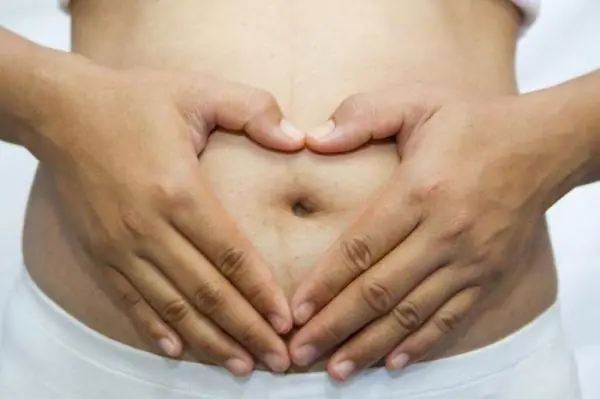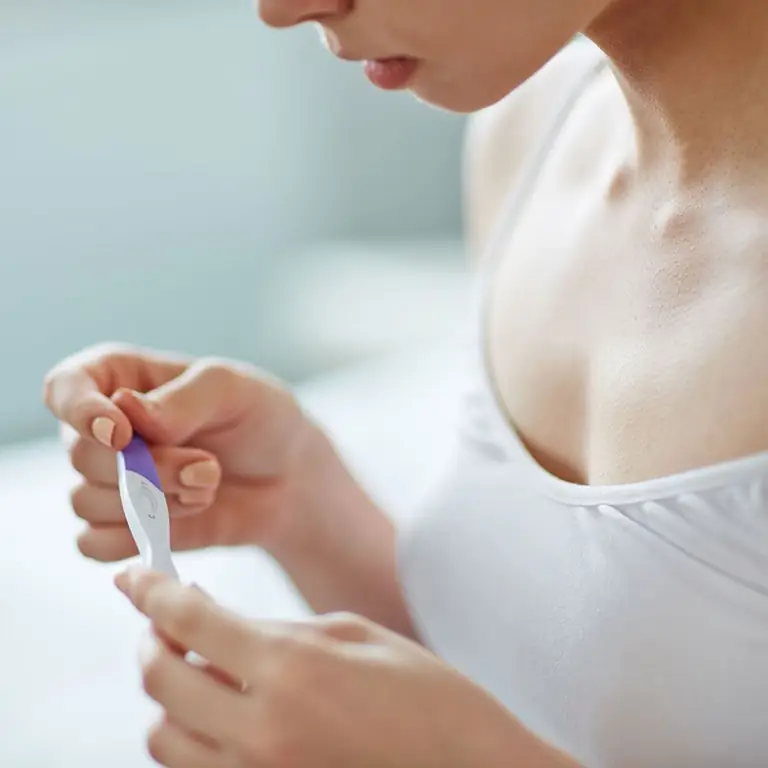2026 Author: Priscilla Miln | [email protected]. Last modified: 2025-01-22 17:55:13
Hysteroscopy is a popular diagnostic and therapeutic procedure used for various pathologies of the uterine cavity. This procedure was first performed in 1869. After 100 years, hysteroscopy has become available to many women, it is now possible to perform it in almost any antenatal clinic or in gynecological departments.
Procedure description: main features

Any woman who is going to undergo gynecological manipulation, especially if it is associated with the use of instruments, is naturally concerned about a number of questions: will it hurt, what are the possible complications, how will the procedure affect reproductive function, and is pregnancy possible after hysteroscopy? In order to get answers to them, it is necessary to clearly understand how this medical manipulation is carried out. Hysteroscopy is carried out after a thorough examination, which is carried out by a gynecologist using a specialized hysteroscope apparatus. During the procedure, the doctor sees the uterine cavity with a camera,which is located on the device. The image is displayed in an enlarged form on the screen, which allows the specialist to see the presence of any pathological processes and assess the severity, and often make a decision to eliminate the pathology.
Why is this procedure necessary?
Hysteroscopy makes it possible to examine the uterine cavity with the possibility of further carrying out the necessary various manipulations in the patient:
- Elimination of the myoma node.
- Carrying out control over the remnants of the ovum after termination of pregnancy.
- Removal of endometrial polyps by diagnostic curettage.
- Surgical abortion.
- Targeted endometrial biopsy.
Indications for conduction
Hysteroscopy can be performed both on a planned and emergency basis. Planned medical manipulations are carried out in such cases:
- presence of polyps in the uterus;
- endometrial hyperplasia;
- disorders of the ovarian-menstrual cycle;
- adenomyosis and submucosal fibroids;
- various anomalies in the development of the uterus;
- suspicion of endometrial cancer cells;
- removal of ingrown or remnants of the IUD;
- failed IVF;
- infertility;
- impossibility of bearing a pregnancy.

Emergency indications:
- some heavy bleeding;
- some types of polyps (eg placental);
- nascent myoma;
- endometritis,having postpartum origin;
- suspected suture separation after caesarean section.
Hysteroscopy Benefits
This examination method is one of the safest. According to reviews, pregnancy after hysteroscopy is not only possible. In some cases, the chances of conceiving a child increase. The doctor has the opportunity to visually assess the condition of the mucous membrane, in addition, which is important, take a biopsy from unfavorable areas for further study of pathological cells. If necessary, a complete scraping of the entire endometrium is performed, and most importantly, this method reduces to zero the likelihood of residues and non-scraped areas. Another of the most important advantages is that timely hysteroscopy can detect the development of cancer cells in the uterine cavity. The sooner the patient learns about this and consults a doctor, the more chances he has for a favorable outcome of the disease.

Hysteroscopy during surgical abortion
This abortion procedure will cost an order of magnitude more than a regular abortion. Unfortunately, many women are forced to undergo this procedure not of their own free will. Cases are different: missed pregnancy, fetal malformations, unsuccessful IVF. Therefore, many are interested in the possibility of pregnancy after hysteroscopy of the uterus. And here this possibility increases many times, because, firstly, there is a clear control, which is a guarantee of security; Secondly, there is no possibility of damagedeep layer of the endometrium; thirdly, when scraping a fetal egg, there is practically no chance of its remains, since the procedure takes place under full visual control.
Uterine fibroids treatment

The use of hysteroscopy when removing uterine fibroids is possible if, according to ultrasound, it is small and the myoma nodes are located in the submucosal layer of the uterus. The presence of a myomatous node in young women is often the cause of infertility or spontaneous abortion. Previously, operations of this kind were performed only through the abdominal cavity. The advantage of this method is not only the absence of incisions in the abdominal cavity, but also the preservation of the uterus itself, which is important when planning pregnancy after hysteroscopy. Conducting such an examination will reveal to the doctor a complete picture of the patient's he alth and help prescribe adequate treatment.
Chances of getting pregnant after hysteroscopy

No doctor can give a definite answer. Pregnancy after hysteroscopy can definitely be, it all depends on the specific problems of the patient. With the help of this procedure, the condition of the fallopian tubes is quite successfully determined, and if polyps or adhesions are found in them, then their elimination often helps women conceive a child. When an endometrial polyp is removed during the procedure, pregnancy after hysteroscopy can be planned no earlier than 3-6 months, at which time the patient most oftenrecommend the use of oral contraceptives. Polyps are growths in the lining of the uterus. Their appearance is usually associated with hormonal disorders in the body. A woman who has a polyp in the uterine cavity often cannot become pregnant because polyps act on the body in the same way as a spiral. The statistics for this disease is very good: 90% of women manage to conceive a child after a hysteroscopy with removal of polyps and further hormonal treatment.
It should be borne in mind that the body of each person is individual, but it can be said for sure that if a polyp has been removed, pregnancy after hysteroscopy has an increased chance. In the treatment of infertility, this medical procedure is now increasingly used. Based on the diagnosis of the patient (non-functioning of the ovaries, the presence of endometriosis, and much more), the doctor conducts a comprehensive examination and tries to eliminate pathologies. In the event that pregnancy does not occur after hysteroscopy, then IVF is recommended for the woman.
When can I plan to conceive a child
One of the important questions for women who want to have a baby: when to plan a pregnancy after hysteroscopy? No doctor can give an exact answer because everything is very individual. After medical manipulations, the patient must be observed by a doctor and follow all his appointments. According to the recommendations of experts, pregnancy in the first 6 months after the procedure is undesirable. There are cases that after hysteroscopy, pregnancy occurred already in the second cycle after the examination. But still, this is a risk, such medical intervention often entails subsequent treatment in the form of taking antibacterial or hormonal drugs, which will adversely affect the woman in position.

Hysteroscopy is tried to be performed on the 6-9th day of the menstrual cycle, and after it, the patient will need sexual rest for 3 weeks. In the event that the patient feels well and she has not revealed any violations, then in a month she can already plan a pregnancy after endometrial hysteroscopy, but it is better to wait a little longer. In some cases, the timing of conception planning will be affected by the type of treatment and its timing, which will be determined by the nature of the pathology identified during the examination.
It is important for a woman to understand that the timing of conception planning and its implementation are two different things. Everything depends not on hysteroscopy, but on gynecological he alth at the moment. Many couples are able to conceive after 6 months. For some, it only happens after a few years. We can safely conclude that hysteroscopy does not negatively affect a woman's reproductive function, and in some cases it can be prescribed in the treatment of infertility.
Contraindications for the procedure
Before performing hysteroscopy, a qualified doctor always examines the patient, identifying the presence or absence of contraindications to this medical manipulation. Contraindications include viral and infectious diseases (ARVI, tonsillitis,flu), acute inflammatory and infectious diseases in the pelvic organs, cardiovascular diseases, uterine cancer, pregnancy, uterine stenosis, excessive uterine discharge, the presence of large tumors. In such a situation, the gynecologist prescribes the appropriate treatment, which is primarily aimed at minimizing all the adverse effects of the hysteroscopy procedure.
The patient's well-being after hysteroscopy

The appearance of profuse bleeding from the vagina immediately after medical manipulations of this kind is the norm. This usually lasts 7 days, but for some it can take up to 3 weeks. If, after 3 weeks, a person experiences severe pain or bleeding does not go away, then you should immediately consult a doctor. Hysteroscopy is usually performed on the 6-9th day of a woman's cycle, that is, before ovulation. With a favorable prognosis, there should not be a delay in menstruation, although it may move slightly, which will not affect the cycle as a whole. Usually, after such a procedure, a woman spends several hours in the hospital, and as soon as she feels better, she can go home. Next, the gynecologist will recommend the patient to do an ultrasound after 1 month, then after 3 and 6 months.
Recommended:
How much discharge can there be after cleaning a dead pregnancy? Features of the procedure, consequences, recovery time

Why does bleeding of long duration occur after cleaning a missed pregnancy? In what cases does the discharge become a pathology, and the woman needs the help of a treating specialist? Preventive measures to prevent complications
How many days can I get pregnant after my period? How fast can you get pregnant after your period? Chances of getting pregnant after period

Pregnancy is a crucial moment for which every woman wants to be ready. To determine the probable moment of conception, it is necessary to know not only the time of ovulation, but also some features of the human body
Can a newborn sleep on his stomach after feeding? Can a newborn sleep on her mother's stomach?

Can a newborn baby sleep on his stomach? There are different opinions on this subject, which we will try to consider carefully
Is it possible to get pregnant after cleansing? How long can you get pregnant after the procedure

Being a mother is so natural and important for every woman. But sometimes life circumstances are stronger and you have to resort to artificial termination of pregnancy. Sometimes this is due to the age characteristics of the mother or her financial situation. Then the decision is made by the woman herself. Sometimes an abortion is prescribed for medical reasons. But in any case, the question of whether pregnancy is possible after cleaning is relevant for each of these cases
Is it possible to give birth after an abortion? How long can you have an abortion? What is the chance of getting pregnant after an abortion

The issue of family planning today can be addressed in many ways. There are many ways to prevent unwanted pregnancy. Unfortunately, the statistics are still disappointing. Out of 10 pregnancies, 3-4 are abortions. Well, if the family already has children. It is much worse if young girls decide to take such a step. It is they who then ask the doctors if it is possible to give birth after an abortion

